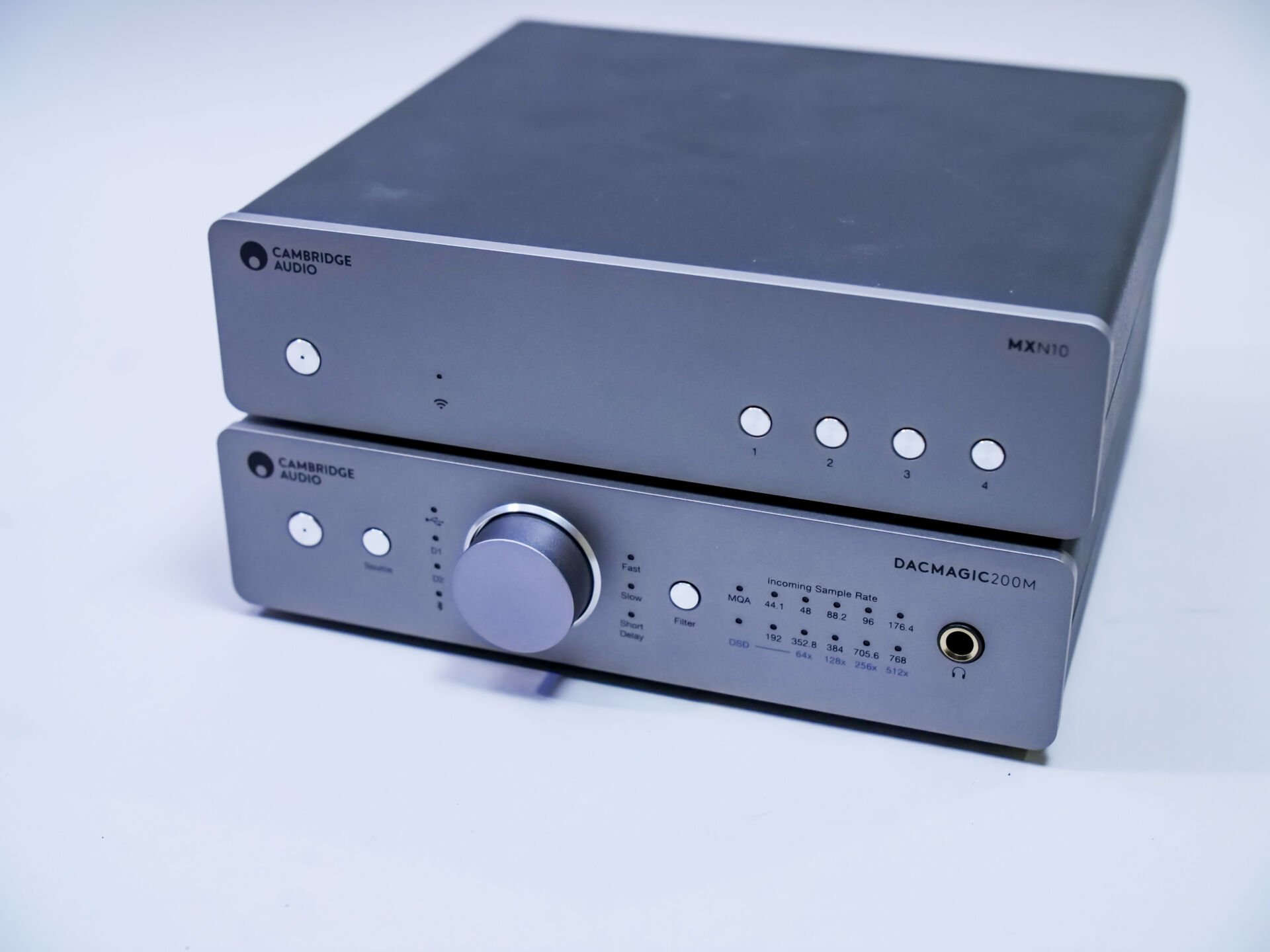

Intro
Contents
Our last review of a Burson was ten years ago. So here is a review of the reference model: the Bursons Conductor V3. Australian brand Burson makes headphone and preamplifiers in combination with DACs. In the Burson collection we also see a stereo power amplifier. The brand is best known for its discrete op-amps.
The Burson Conductor V3 is a headphone amplifier, a preamplifier, USB-DAC and a bluetooth receiver. All this in a heavy aluminium housing that is cast all around in a ribbed structure. On the front panel we see a volume control and selection button, a display and source selection, output selection buttons and the orientation of the display. We can place the Conductor horizontally and vertically and the display can be flipped accordingly. Two fullsize stereo jack outputs for the headphones and for the gamers a microphone input (3.5 mm mini-jack). On the back we see two pairs of RCA inputs (line in), S/PDIF inputs (optical and coaxial), a USB-C port for the DAC, an antenna for the bluetooth receiver.
On the output side there are variable and fixed outputs (RCA). For some reason this last output is labeled as ‘DAC’. In the manual we find no explanation and also in use it is a normal analog output without volume control. For the power supply there is a 24V input. Burson’s Conductor V3 is delivered with an IR remote control.
The Burson Conductor V3 is also available in a balanced version, the Conductor V3X; instead of two 6.35 mm stereo jacks there is a balanced output (4-pin XLR) and a regular output. At the rear, the line outputs are in XLR.
Discrete op-amp & power upcycling
Burson’s idea of amplifier design for the Conductor V3 is slightly different than the that of the competitors. To begin with, the power treatment; Burson has eliminated power noise by increasing the frequency from 50-60 Hz to 170 kHz; far beyond the human hearing threshold. Somewhat similar to upsampling digital audio files, which is also meant to keep unwanted noise and other annoyances out of your ear.
An additional advantage of this high frequency – still according to Burson – is that the operational speed of the electrical circuits is increased. Bursons also don’t have a toroidal transformer and has designed another topology of capacitors. All this should render a low noise floor and a fast and responsive amplifier.
A second Burson characteristic is the design of the op-amp. Burson designs discrete op-amps that are sold separately as well as in its own amplifiers. You can replace your IC op-amp in your own amplifier with a Burson. Currently there are three models of these op-amps available.
The text in which Burson explains how the discrete op amps relate to ICs can be read as a story in which IC-op amps are more and more classified as ‘enemies of the people’ and are the source of almost all audio evil. Burson explains it all here. You can also equip the Burson Conductor V3 yourself with two other op-amps which you can order afterwards. The instruction manual describes how to do this.










